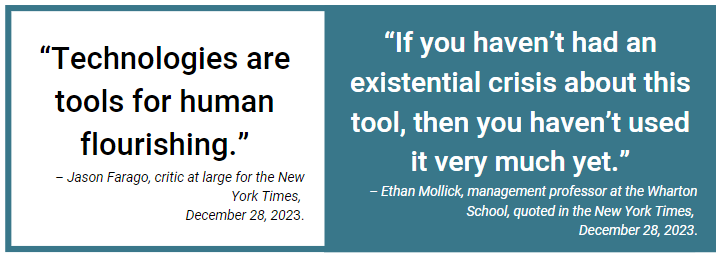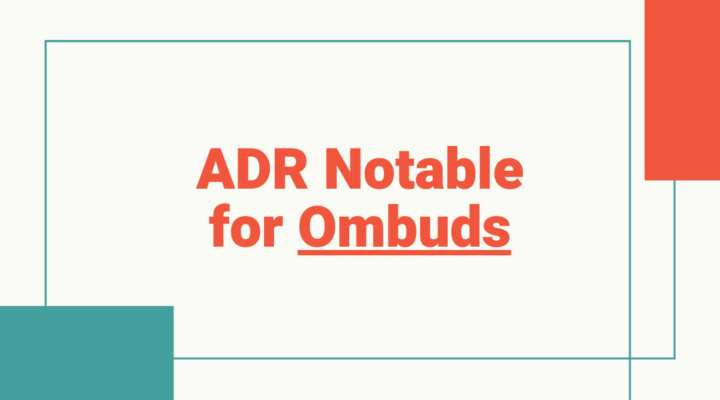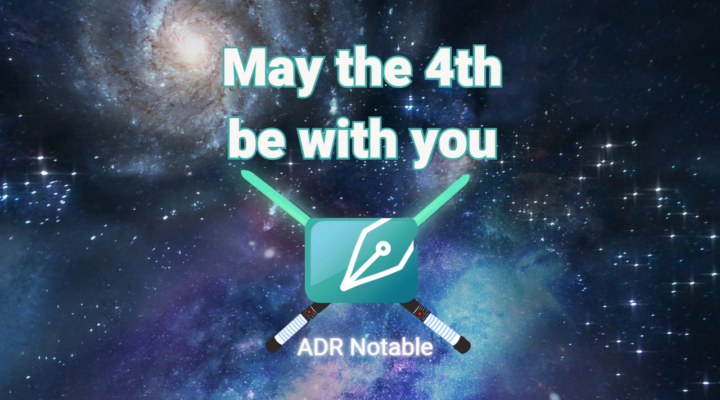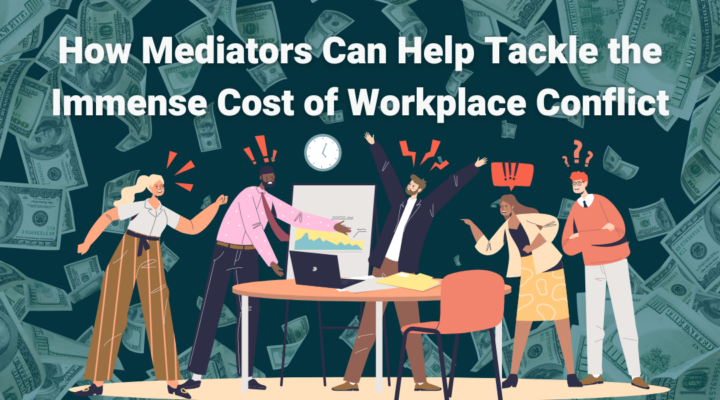The Generative Spark: AI as a Creativity Catalyst

Confused about whether AI is good or bad?
You’re not alone, as you can see from these quotes taken from New York Times articles appearing on the same day. But a deeper dive can show how AI can be a useful catalyst to creative thinking for dispute resolution professionals.
In the first article, Jason Farago, the Times culture critic, does an exceptional job of putting the fears of technology into a smaller box. He focuses on the uses of AI in art and music, and his perspective also informs those fearful of technology in the very human environment of conflict resolution.
With the ear and eye of a professional critic, he notes that the musical or visual artistic work product of generative AI tends to be somewhat generic, which is not surprising once you consider how AI operates. AI is limited to working within its training data set. It can mimic musical styles with uncanny accuracy or assemble visual art in unexpected ways, but it is always working only from the examples it has been given. He concludes that AI is still incapable of replicating the genuine process of artistic creativity but that it may become an interesting tool in the hands of an artist, helping bring to life the artist’s truly creative concept. He is also dismissive of the risk to his own job as a journalist, citing the unreliability of written work product produced by AI chatbots.
In a fascinating parallel context, David Berreby writes about a well-designed study done to determine whether AI chatbots could aid business consultants in doing their jobs. Teams at Boston Consulting Group were given identical tasks but some used AI after a short training session, some used AI with no training and a third group addressed the tasks without the use of AI.
Testing AI at Boston Consulting Group
One task required brainstorming the design of a product, the generation of a persuasive business plan and related promotional materials. The study found that AI materially enhanced the work product in this application, even in some cases where the AI output was used verbatim.
In contrast, the AI tools were detrimental to the performance of teams assigned to advise a company based on the analysis of data from spreadsheets and mock interview transcripts of corporate leadership. In this context, AI’s tendency to generate incorrect conclusions that are beautifully well-written sometimes led the human advisors astray. The different business case contexts underscore a cautionary message about overreliance on AI:
In brainstorming, all ideas are on the table and humans naturally assess the AI output. That collaboration yields positive results. In the analytical context there is greater pursuit of a definitive answer and humans can be lulled into accepting superficially well-crafted AI work product.
The Yin and the Yang
There is a classic yin-yang that runs through these articles. Berreby notes the passive ‘yin’ – the risk of over-reliance on AI that may imperil the future of human creativity: “Nearly three out of four participants told the researchers that they worried ChatGPT use would cause their own creative muscles to atrophy.”
Farrago sees the active ‘yang’:
“Rather than worry about whether bots can do what humans do, we would do much better to raise our cultural expectations of humans: to expect and demand that art — even and especially art made with the help of new technologies — testify to the full extent of human powers and human aspirations.”
The Takeaway for Dispute Resolution Professionals
These two articles offer important messages for the dispute resolution practitioner. The ‘yin’ of AI threatens to replace only those practitioners who passively approach each case in a cookie-cutter style, failing to appreciate the individual human elements and engage in creative problem-solving. Where such creativity is needed, AI can be a tool used in combination with the judgment of humans. The ‘yang’ of AI is a springboard, challenging the practitioner to go beyond the AI’s capabilities and find the essential humanity and ingenuity needed in the practice of dispute resolution. The key may very well be to think about AI as a creativity catalyst for dispute resolution professionals.
ADR Notable is a technology tool that respects and supports the crucial human foundation of dispute resolution. Sign for up a demo to learn more or start a free trial to see for yourself. Or check out more on our website.






